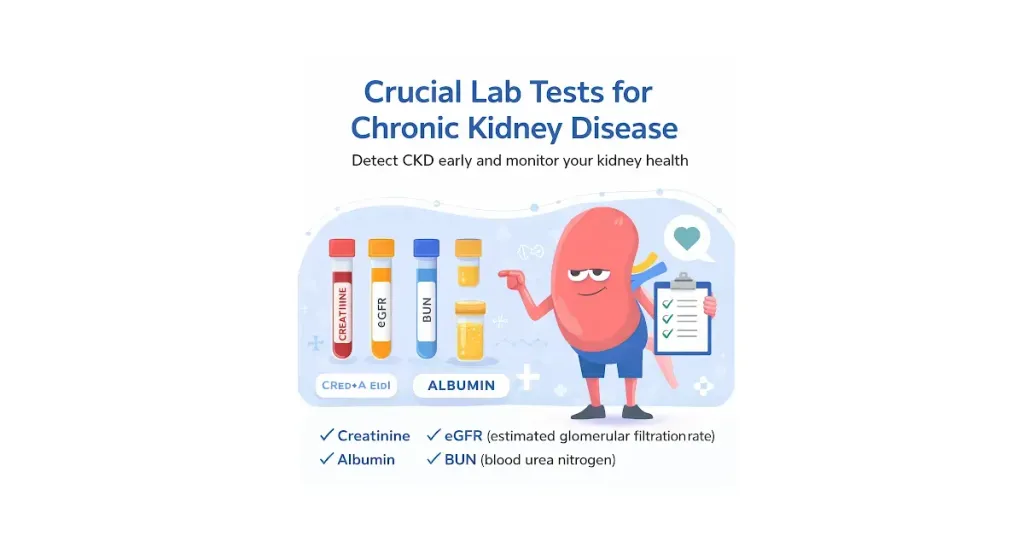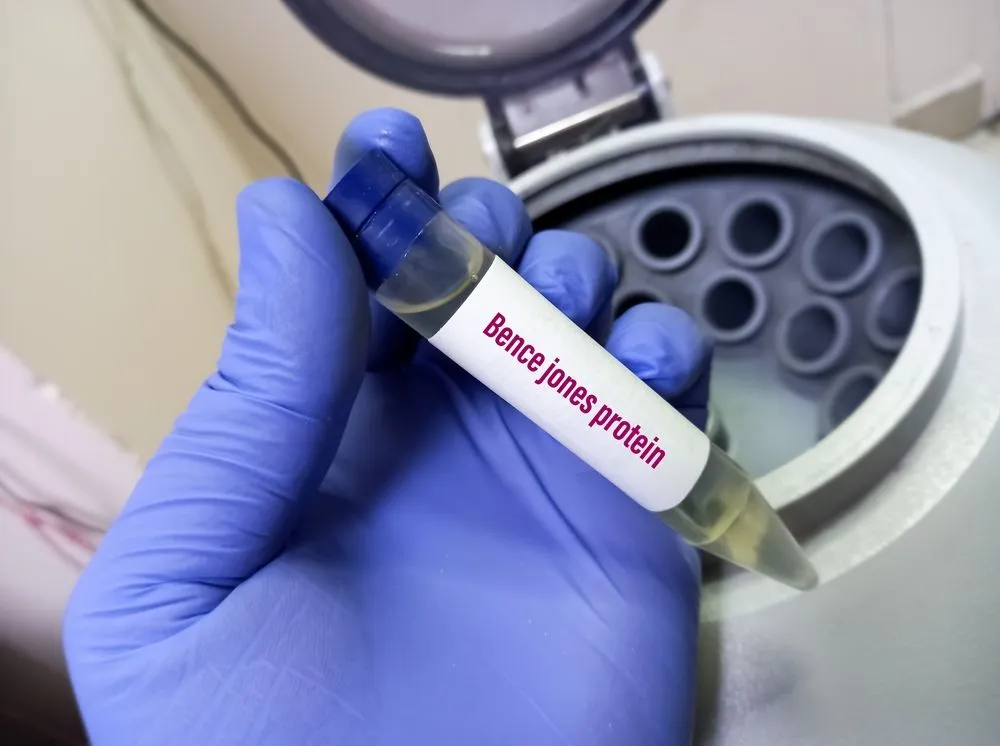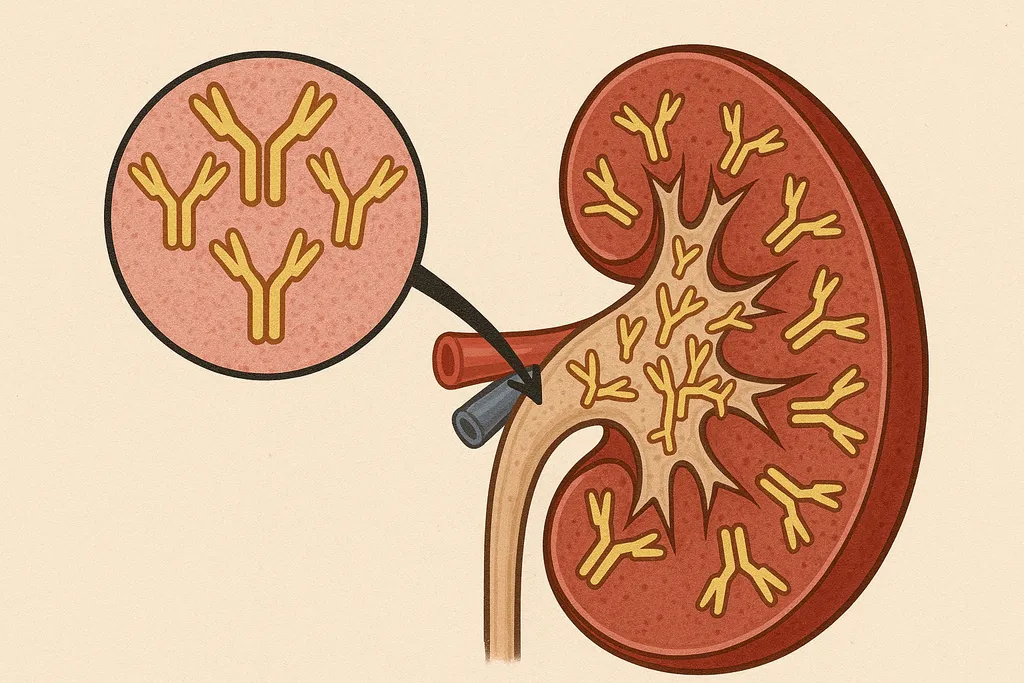Watch and Wait? When to Take Action on Your MGUS or Smoldering Myeloma

Most MGUS and smoldering myeloma patients loathe hearing "watch and wait" when it comes to monitoring their myeloma. This phrase often induces anxiety, especially for those unsure what to be watching for. While your myeloma specialist (yes, even precursor patients should have a specialist!) will be on top of your lab monitoring, understanding yourself what they are looking for and why it's important can be a game-changer in how your multiple myeloma is treated.
Not every precursor myeloma patient will advance to active multiple myeloma. But for now, we are unsure which of the precursor population wil progress, thus making monitoring of MGUS or smoldering myeloma absolutely vital to staying on top of the disease.
So what numbers are you supposed to "watch" in your labs, and what is it that you need to "wait" for? Medical professionals from the HealthTree Foundation for Myeloma team, Marilú Nájera, and Arturo Hurtado joined us in January 2023 to share more information on this subject.
You can watch the video or read the summary below for more information:
Why monitor your labs as a precursor myeloma patient?
By understanding your lab values, you understand progression indicators so you can take action in a timely manner. This means identifying future treatment options if the disease progresses.
Monitoring your labs is a tool to decide how often to get your checkups. By evaluating your labs, you can tell if your disease is stable or at risk of progressing. Remember, having a myeloma specialist by your side is essential to help you monitor your disease.
For MGUS patients, the course of action is to watch and wait most of the time, so you will most likely be monitored every 3-6 months with routine labs to check for progression. There are few clinical trials approved for MGUS patients and no FDA-approved treatments for the condition.
For smoldering myeloma patients, the frequency of monitoring will depend on the risk level. The treatment for smoldering myeloma patients often includes clinical trials. However, there is one FDA-approved treatment for high-risk smoldering myeloma (Revlimid), so understanding your labs will help you know if you meet the criteria for any available clinical trials.
Biology 101 for Myeloma
Cells are intended to grow, reproduce and die after completing their cycle, and if they start malfunctioning, cells should get repaired and then get back to work. If this repair process fails, cells should stop dividing. When they don’t, these cells manage to start dividing and reproducing in an uncontrolled way, which later on will develop into a tumor, in this case, an uncontrolled production of plasma cells that will develop into multiple myeloma.
What to Monitor in Your Labs
Understanding CRAB
A common acronym for active myeloma manifestation is CRAB. These manifestations are partly what your specialist will look for when monitoring your labs, and it's helpful if you are aware of their significance as well.
- C- High calcium
- R- Renal insufficiency
- A- Anemia (low hemoglobin levels)
- B- Bone lesions on imaging reports
Calcium and renal insufficiency can be monitored on a comprehensive metabolic panel. Calcium levels references are between 8.4 and 10.2 milligrams per deciliter. High calcium levels symptoms are constipation, loss of appetite, weakness, drowsiness, and confusion.
Renal insufficiency can lead to elevated serum creatinine or low eGRF, possibly resulting in kidney damage. Creatinine should be between 0.5 and 1 milligram per deciliter and eGFR above 60 milliliters per minute.
Anemia can be traced in a CBC (Complete Blood Count) test. Low hemoglobin is a sign of anemia and could also represent progression to active multiple myeloma. Some symptoms can be fatigue, weakness, pale skin, and dizziness. Hemoglobin levels should be between 12.1 and 15.9 grams per deciliter.
Imaging tests reflect osteolytic (bone) lesions, a common manifestation of active multiple myeloma.
Understanding Myeloma-Specific Labs
Monoclonal Protein Monitoring
Another marker your specialist will monitor is your monoclonal protein level or your m-spike (unfortunately, there are many names for this marker among labs, but those are the two most common).
The normal value for the m-spike is always zero, meaning anything above this value is considered out of range. We can find this in the serum/urine samples protein electrophoresis test.
For MGUS patients, the m-spike range is less than 3 grams per deciliter in their serum.
For smoldering myeloma patients, the range is more than 3 grams per deciliter in their serum or more than 500 mg per deciliter in urine per day.
Immunoglobulins (Antibodies) and Myeloma Subtypes
Healthy plasma cells produce multiple proteins called immunoglobulins. These proteins attach to foreign substances entering the body to fight infections. We are supposed to have a variety of immunoglobulins to help us accomplish this, but when we have an abnormal (myeloma) plasma cell instead, it reproduces uncontrollably and produces a specific abnormal protein called monoclonal protein (as referenced earlier, also called m-spike). Since we only have one type of cell reproducing uncontrollably, we only have one type of immunoglobulin being produced. This means that other disease-fighting immune cells are crowded out and can no longer fight infections properly.
Because each case of myeloma is different (even within precursor stages), there are different subtypes of immunoglobulins within a person's immune system and disease. For example, there are:
- IgG
- IgA
- IgM
- IgE
- IgD
Immunoglobulins (antibodies produced by plasma cells) are formed in two parts. The first is the heavy chain (or immunoglobulin subtype like IgG or IgA). The second part of the immunoglobulin is the light chain (either kappa or lambda).
Depending on the original mutated cell that set off your multiplying myeloma cells, you will have a certain kind of precursor myeloma to monitor. This could be IgG Lambda, IgA Kappa, etc.
Free-Light Chain Ratio
Your free-light chain ratio is a key marker of active myeloma that your doctor will monitor. They will monitor the ratio between your kappa and lambda within your immune system. In this test, the normal range ratio is 0.26-1.65. You can conclude the ratio by dividing your kappa numbers by your light chain numbers (remember to use the numbers within your specific subtype, such as IgA or IgE.)
Plasma Cell Percentage
Plasma cell percentage is obtained from a bone marrow biopsy and can tell if the disease progresses.
- Non-myeloma patients should have less than 5% plasma cells and no CRAB markers
- MGUS patients have between 5% and 10% plasma cells and no CRAB markers
- Smoldering myeloma patients have plasma cells between 10% and 60% percent and no CRAB markers
- Active multiple myeloma patients have more than 60% plasma cells and CRAB markers
Trends, Not One Number
The key to following your lab results is to pay attention to trends instead of just a single number. You need a baseline to compare your following lab results. This baseline could be your first lab results from when you were diagnosed. Trends can help you understand how your condition has changed over time and when to talk to your doctor about it.
Using HealthTree Cure Hub to Track Your Labs
You can monitor your lab trends using our HealthTree CureHub tool. Create an account and have all of your labs automatically imported, even from multiple centers.
We have a medical team who can help you understand your diagnosis better and our patient navigators who can provide more information and resources. Contact support@healthtree.org or + 1 800 709 1113 for help understanding your labs. We are here to help!
Most MGUS and smoldering myeloma patients loathe hearing "watch and wait" when it comes to monitoring their myeloma. This phrase often induces anxiety, especially for those unsure what to be watching for. While your myeloma specialist (yes, even precursor patients should have a specialist!) will be on top of your lab monitoring, understanding yourself what they are looking for and why it's important can be a game-changer in how your multiple myeloma is treated.
Not every precursor myeloma patient will advance to active multiple myeloma. But for now, we are unsure which of the precursor population wil progress, thus making monitoring of MGUS or smoldering myeloma absolutely vital to staying on top of the disease.
So what numbers are you supposed to "watch" in your labs, and what is it that you need to "wait" for? Medical professionals from the HealthTree Foundation for Myeloma team, Marilú Nájera, and Arturo Hurtado joined us in January 2023 to share more information on this subject.
You can watch the video or read the summary below for more information:
Why monitor your labs as a precursor myeloma patient?
By understanding your lab values, you understand progression indicators so you can take action in a timely manner. This means identifying future treatment options if the disease progresses.
Monitoring your labs is a tool to decide how often to get your checkups. By evaluating your labs, you can tell if your disease is stable or at risk of progressing. Remember, having a myeloma specialist by your side is essential to help you monitor your disease.
For MGUS patients, the course of action is to watch and wait most of the time, so you will most likely be monitored every 3-6 months with routine labs to check for progression. There are few clinical trials approved for MGUS patients and no FDA-approved treatments for the condition.
For smoldering myeloma patients, the frequency of monitoring will depend on the risk level. The treatment for smoldering myeloma patients often includes clinical trials. However, there is one FDA-approved treatment for high-risk smoldering myeloma (Revlimid), so understanding your labs will help you know if you meet the criteria for any available clinical trials.
Biology 101 for Myeloma
Cells are intended to grow, reproduce and die after completing their cycle, and if they start malfunctioning, cells should get repaired and then get back to work. If this repair process fails, cells should stop dividing. When they don’t, these cells manage to start dividing and reproducing in an uncontrolled way, which later on will develop into a tumor, in this case, an uncontrolled production of plasma cells that will develop into multiple myeloma.
What to Monitor in Your Labs
Understanding CRAB
A common acronym for active myeloma manifestation is CRAB. These manifestations are partly what your specialist will look for when monitoring your labs, and it's helpful if you are aware of their significance as well.
- C- High calcium
- R- Renal insufficiency
- A- Anemia (low hemoglobin levels)
- B- Bone lesions on imaging reports
Calcium and renal insufficiency can be monitored on a comprehensive metabolic panel. Calcium levels references are between 8.4 and 10.2 milligrams per deciliter. High calcium levels symptoms are constipation, loss of appetite, weakness, drowsiness, and confusion.
Renal insufficiency can lead to elevated serum creatinine or low eGRF, possibly resulting in kidney damage. Creatinine should be between 0.5 and 1 milligram per deciliter and eGFR above 60 milliliters per minute.
Anemia can be traced in a CBC (Complete Blood Count) test. Low hemoglobin is a sign of anemia and could also represent progression to active multiple myeloma. Some symptoms can be fatigue, weakness, pale skin, and dizziness. Hemoglobin levels should be between 12.1 and 15.9 grams per deciliter.
Imaging tests reflect osteolytic (bone) lesions, a common manifestation of active multiple myeloma.
Understanding Myeloma-Specific Labs
Monoclonal Protein Monitoring
Another marker your specialist will monitor is your monoclonal protein level or your m-spike (unfortunately, there are many names for this marker among labs, but those are the two most common).
The normal value for the m-spike is always zero, meaning anything above this value is considered out of range. We can find this in the serum/urine samples protein electrophoresis test.
For MGUS patients, the m-spike range is less than 3 grams per deciliter in their serum.
For smoldering myeloma patients, the range is more than 3 grams per deciliter in their serum or more than 500 mg per deciliter in urine per day.
Immunoglobulins (Antibodies) and Myeloma Subtypes
Healthy plasma cells produce multiple proteins called immunoglobulins. These proteins attach to foreign substances entering the body to fight infections. We are supposed to have a variety of immunoglobulins to help us accomplish this, but when we have an abnormal (myeloma) plasma cell instead, it reproduces uncontrollably and produces a specific abnormal protein called monoclonal protein (as referenced earlier, also called m-spike). Since we only have one type of cell reproducing uncontrollably, we only have one type of immunoglobulin being produced. This means that other disease-fighting immune cells are crowded out and can no longer fight infections properly.
Because each case of myeloma is different (even within precursor stages), there are different subtypes of immunoglobulins within a person's immune system and disease. For example, there are:
- IgG
- IgA
- IgM
- IgE
- IgD
Immunoglobulins (antibodies produced by plasma cells) are formed in two parts. The first is the heavy chain (or immunoglobulin subtype like IgG or IgA). The second part of the immunoglobulin is the light chain (either kappa or lambda).
Depending on the original mutated cell that set off your multiplying myeloma cells, you will have a certain kind of precursor myeloma to monitor. This could be IgG Lambda, IgA Kappa, etc.
Free-Light Chain Ratio
Your free-light chain ratio is a key marker of active myeloma that your doctor will monitor. They will monitor the ratio between your kappa and lambda within your immune system. In this test, the normal range ratio is 0.26-1.65. You can conclude the ratio by dividing your kappa numbers by your light chain numbers (remember to use the numbers within your specific subtype, such as IgA or IgE.)
Plasma Cell Percentage
Plasma cell percentage is obtained from a bone marrow biopsy and can tell if the disease progresses.
- Non-myeloma patients should have less than 5% plasma cells and no CRAB markers
- MGUS patients have between 5% and 10% plasma cells and no CRAB markers
- Smoldering myeloma patients have plasma cells between 10% and 60% percent and no CRAB markers
- Active multiple myeloma patients have more than 60% plasma cells and CRAB markers
Trends, Not One Number
The key to following your lab results is to pay attention to trends instead of just a single number. You need a baseline to compare your following lab results. This baseline could be your first lab results from when you were diagnosed. Trends can help you understand how your condition has changed over time and when to talk to your doctor about it.
Using HealthTree Cure Hub to Track Your Labs
You can monitor your lab trends using our HealthTree CureHub tool. Create an account and have all of your labs automatically imported, even from multiple centers.
We have a medical team who can help you understand your diagnosis better and our patient navigators who can provide more information and resources. Contact support@healthtree.org or + 1 800 709 1113 for help understanding your labs. We are here to help!

about the author
Marisol Garcia Calvo
I am the Community Events Coordinator. I joined HealthTree in 2021 as part of this program, where I help with the logistics of our events. I am passionate about finding new ways to bring information and education to patients so they can become their own best advocates.
More on Core Education
Trending Articles
Upcoming Events




Get the Latest Multiple Myeloma Updates, Delivered to You.
By subscribing to the HealthTree newsletter, you'll receive the latest research, treatment updates, and expert insights to help you navigate your health.
Together we care.
Together we cure.
3x Faster.













